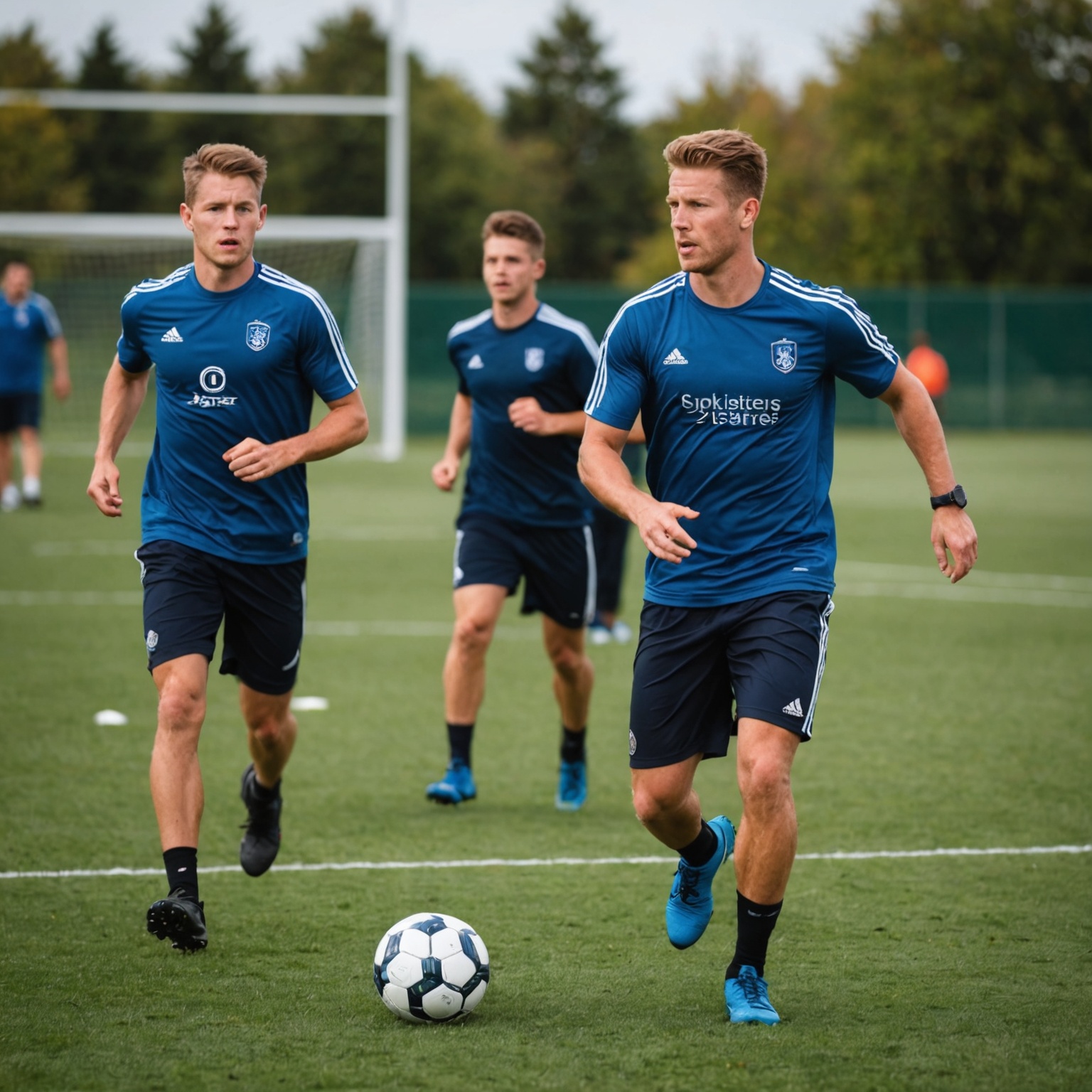As the 2024 football season approaches, teams must look beyond game day strategies and delve into the intricacies of pre-season training. An effective pre-season training program sets the stage for football players to thrive throughout the season. Through focused strength conditioning, high-intensity drills, and structured training sessions, teams can ensure peak performance when it counts the most.
Building a Strong Foundation: Strength and Conditioning
At the heart of any successful football training program lies a robust strength and conditioning regimen. Pre-season offers the prime opportunity to build the physical foundation necessary for the demands of the sport.
A lire en complément : What are the optimal strategies for managing a football player's workload during the season?
Strength training is paramount. Incorporate exercises like the bench press, squats, and deadlifts. These compound movements develop core strength and explosiveness, which are essential for both offensive and defensive positions. Aim for high intensity sets and reps, focusing on muscular endurance and power. This will not only enhance on-field performance but also reduce injury risk.
Conditioning drills are equally crucial. Mix in high-intensity interval training (HIIT) to improve cardiovascular fitness. Sprints, shuttle runs, and circuit-based exercises will help players replicate the game’s demands, where short bursts of speed are followed by brief recovery periods. This conditioning mimics real game situations, preparing the team for the rigors of the season.
Sujet a lire : What are the advanced strategies for improving team tactics in modern football?
The training program should gradually increase in intensity and complexity. Start with foundational exercises and progressively incorporate more challenging drills. Monitor fitness levels and adjust the regimen accordingly, ensuring that players are neither overtrained nor underprepared. By focusing on strength conditioning, teams can build the resilience needed to excel throughout the season.
Enhancing Performance with Speed and Agility Drills
Speed and agility are the cornerstones of football success. Fast and agile players can change the game’s dynamics, creating scoring opportunities and thwarting opponents’ advances.
Speed drills should focus on developing explosive power and quick acceleration. Incorporate ladder drills, cone drills, and resistance sprints to enhance players’ ability to generate speed quickly. Ladder drills, for instance, improve footwork and coordination, allowing players to navigate tight spaces with ease. Resistance sprints, using parachutes or sleds, build leg power and stamina.
Agility drills aim to improve players’ ability to change direction swiftly while maintaining control. Incorporate exercises like the T-drill, shuttle run, and zigzag sprints. These drills simulate real game day scenarios where players must pivot and maneuver around opponents. Agility training also helps in injury prevention by conditioning the muscles and joints to handle sudden movements.
A comprehensive speed agility and agility training plan should be integrated into regular training sessions. Focus on technique and form, emphasizing the importance of proper mechanics. Repetition and consistency are key. Players should practice these drills regularly, gradually increasing the intensity as their skills improve.
By prioritizing speed agility and agility training, teams can develop a squad of players who are not only fast but also capable of making quick, decisive movements. This will be a significant advantage in high-stakes games, where split-second decisions can make all the difference.
The Importance of Ball Skills and Soccer Drills
While physical conditioning is essential, football is ultimately a game played with a ball. Mastery of ball skills and soccer drills is critical for any team aiming for success.
Incorporate a variety of training drills to develop players’ ball-handling abilities. Passing drills, dribbling exercises, and shooting practice should be staples of the training program. These drills help players improve their technical skills, ensuring they can control, pass, and shoot the ball efficiently.
Passing drills, such as the give-and-go or one-touch passing, enhance players’ ability to maintain possession and create scoring opportunities. Dribbling exercises, like cone dribbling and figure-eight dribbling, improve control and maneuverability. Shooting practice, including target shooting and power shots, hones accuracy and goal-scoring ability.
Team-based drills are equally important. Small-sided games, rondos, and positional play exercises help players develop a deeper understanding of game tactics and teamwork. These drills simulate real game day scenarios, allowing players to practice in a competitive environment.
Set aside dedicated training sessions for ball skills and soccer drills. Consistent practice and repetition will help players internalize these skills, making them second nature during matches. Emphasize the importance of maintaining control and composure under pressure, as these qualities can make a significant difference in high-intensity games.
By focusing on ball skills and soccer drills, teams can ensure that their players are technically proficient and tactically aware. This combination of physical conditioning and technical ability is the hallmark of a successful football team.
Crafting a Comprehensive Training Plan
An effective pre-season training program is not just about individual drills and exercises; it’s about crafting a comprehensive training plan that addresses all aspects of the game. This plan should be structured, systematic, and tailored to the team’s specific needs and goals.
Begin by setting clear objectives for the pre-season. Identify areas that need improvement, whether it’s strength, endurance, speed, or ball skills. Use these objectives to inform the design of the training program.
Divide the pre-season into phases, each with a specific focus. The initial phase should emphasize building a solid fitness foundation through strength conditioning and cardiovascular exercises. Progress to more intensive speed agility and agility drills as players’ fitness levels improve. Finally, integrate technical skills and tactical drills, ensuring that players are well-rounded and game-ready.
Monitor players’ progress regularly. Use fitness tests, performance metrics, and observational assessments to gauge improvement and adjust the training program accordingly. Ensure that players receive adequate rest and recovery, as overtraining can lead to injuries and decreased performance.
Incorporate periodization into the training plan. This involves varying the intensity and volume of training sessions to optimize performance and prevent burnout. Alternate between high-intensity and low-intensity sessions, allowing players to recover while still maintaining their fitness levels.
Communication and collaboration are key. Work closely with coaches, trainers, and medical staff to ensure that the training program is effective and safe. Listen to players’ feedback and adjust the plan as needed to address any concerns or challenges.
By crafting a comprehensive training plan, teams can ensure that their players are physically, technically, and mentally prepared for the demands of the season. This holistic approach will maximize performance and increase the likelihood of achieving season-long success.
In conclusion, an effective pre-season training program for football teams is multifaceted, encompassing strength conditioners, speed and agility drills, ball skills, and a well-structured training plan. By focusing on these key components, teams can ensure that their players are ready to perform at their best when the season kicks off.
A well-rounded training program builds the physical foundation through strength training and conditioning, enhances performance with speed and agility drills, and hones technical skills with targeted soccer drills. The training plan should be comprehensive, structured, and tailored to the team’s specific needs, with regular monitoring and adjustments to optimize performance.
As we approach the 2024 football season, investing time and effort into an effective pre-season training program will pay dividends on the field. By prioritizing these key components, teams can ensure that their players are not only physically and technically prepared but also mentally ready to tackle the challenges of the season. Here’s to a successful and victorious football season!

